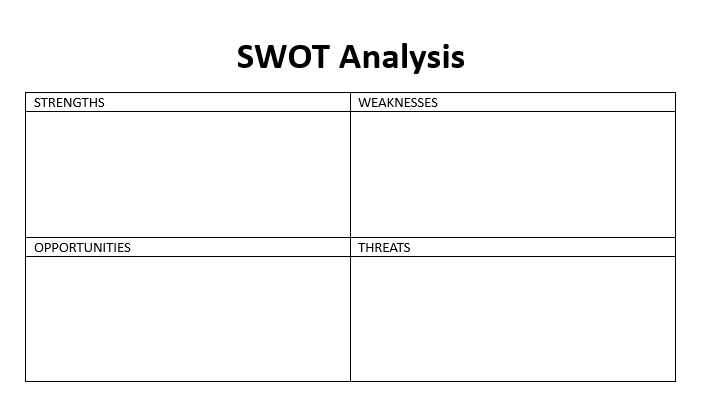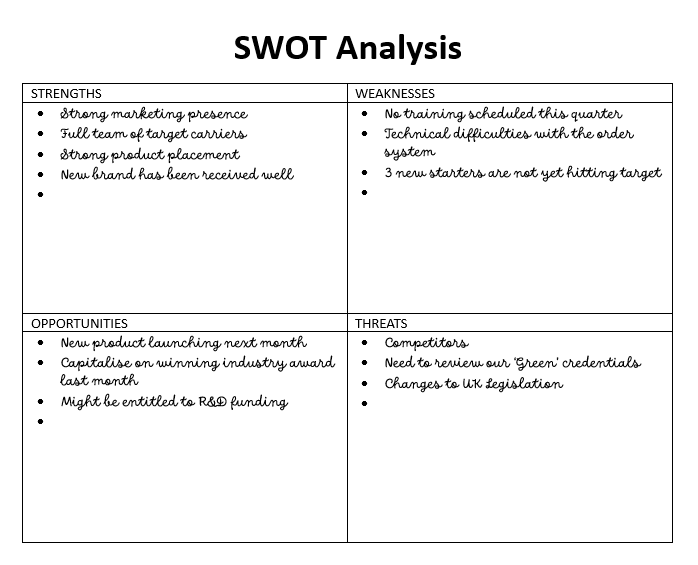What’s this about SWOT-ing enough?
That’s not bad grammar by the way – the eagle-eyed amongst you will realise I am referring to that wonderful tool, The SWOT Analysis.
When I am working one to one with a client to improve their sales performance, I like to take it back to basics so, along with reviewing their vision, mission and values, I do a SWOT Analysis with them.
There is a good reason for this – many managers and leaders get so bogged down in the day-to-day that they end up working “in” the business instead of “on” the business. In other words, they are failing to plan and implement strategically.
That’s really important to address, because if I am putting together a bespoke sales improvement solution for someone, it’s a complete waste of everybody’s time if I end up doing something which is at best “not quite right” or at worst completely wrong for their corporate direction or which doesn’t match their values.
So I thought it would be a useful exercise to revisit SWOT and, for those of you who haven’t come across it before, explain why it is such a fabulous business tool.
The objective of a SWOT Analysis is to help you develop a strong business strategy. It makes sure that you have considered all of your business’s strengths and weaknesses and also the opportunities and threats from the wider world.
Typically, you would do a SWOT Analysis using a simple layout like this:

So Strengths and Weaknesses are at the top. They are internal things which you have some control over.
Whereas Opportunities and Threats are external to the business.
What you need to do is critically appraise where your business is and, using bullets, complete the SWOT.
You don’t need to be particularly detailed, in fact it’s best to approach this as a sort of brain storm – put down things as you think of them and tidy them up later. If you have a team, it can also be a good idea to get them involved too – not only will they contribute things you might not have thought of, but if you do later decide to implement something and they have had input, you are likely to get much more buy-in because they have a feeling of ownership.
So now your SWOT Analysis might look a bit like this:

Note, under ‘Threats’ you will always have competitors.
Once you have completed all of these sections, you will have a very clear snapshot of exactly where your business is RIGHT NOW and then you can go through it again and prioritise according to the highest and lowest priority in each section.
When you have finished, you can use the information to develop long and short term strategies to drive your business forward. You should aim to capitalise on the strengths and opportunities and either minimise or avoid the weaknesses and threats.
Finally, none of this is any good unless you actually implement what you have created, so make sure you include any actions in your overall strategic plan. It is also a good idea to regularly revisit your SWOT as things will change. I tend to do it every quarter, but do what works for you.
Happy SWOT-ing!
